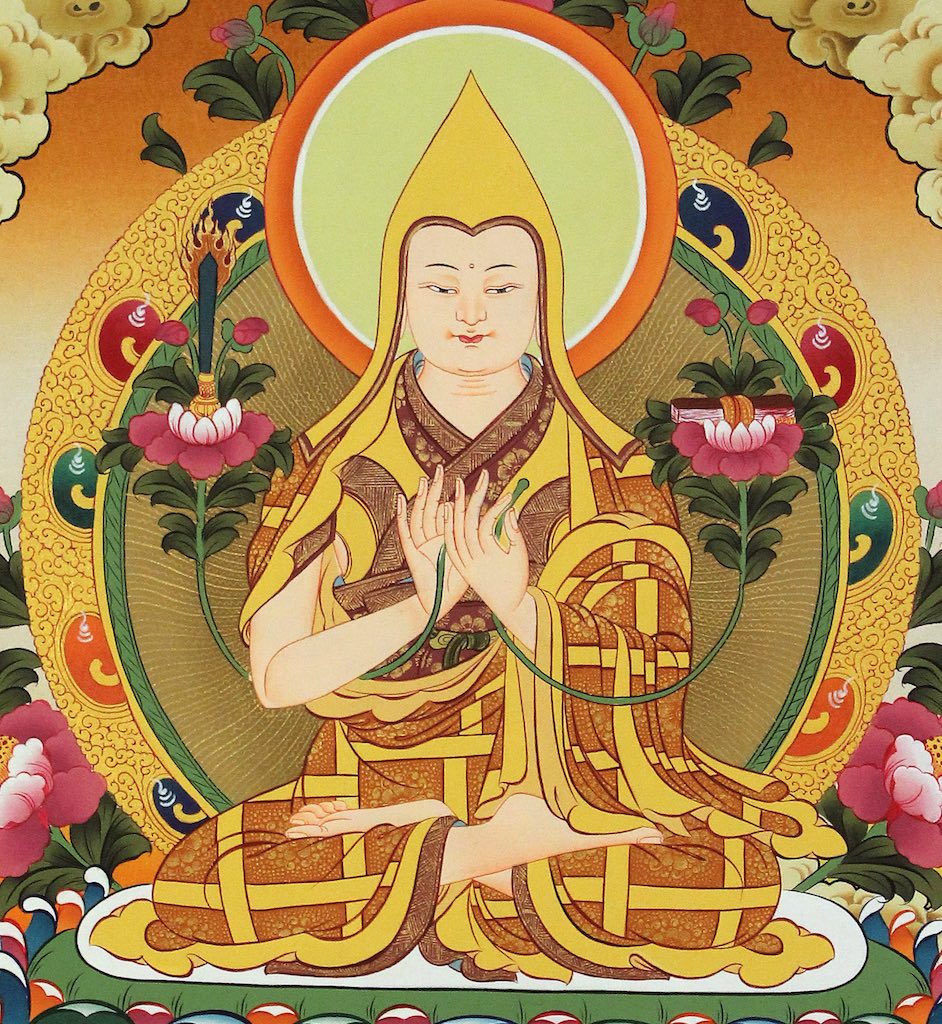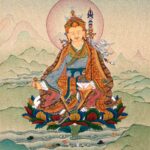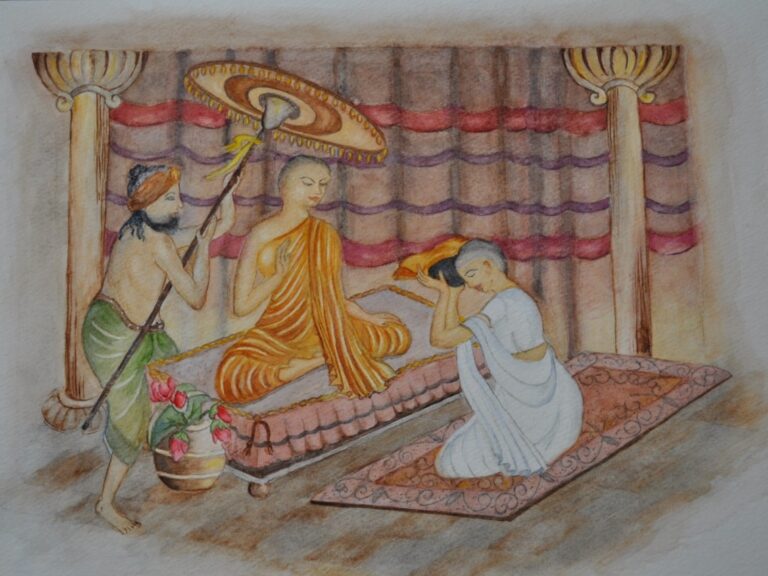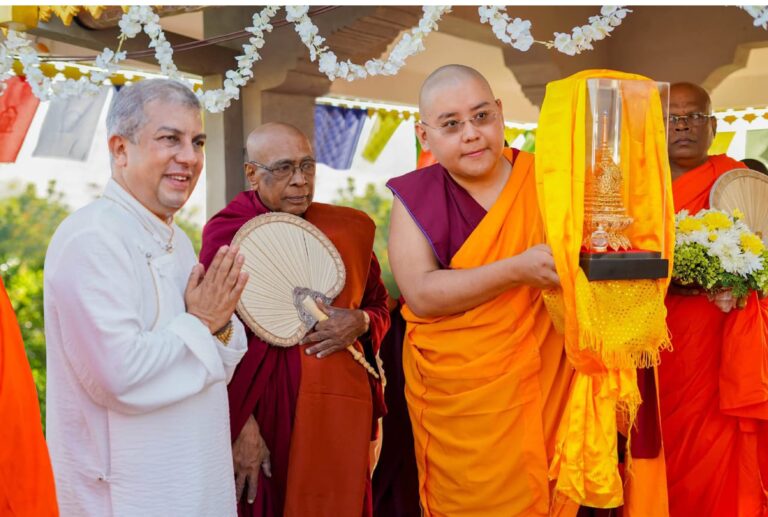Lama Tsongkhapa: The Great Reformer of Tibetan Buddhism, the founder of Gelugpa Tradition Lama Tsongkhapa (1357–1419) stands among the most influential figures in the history of Tibetan Buddhism. A brilliant scholar, a disciplined monk, and an accomplished yogi, he is revered not only as the founder of the Gelug school but also as a reformer …
Lama Tsongkhapa: The Great Reformer of Tibetan Buddhism, the founder of Gelugpa Tradition
Lama Tsongkhapa (1357–1419) stands among the most influential figures in the history of Tibetan Buddhism. A brilliant scholar, a disciplined monk, and an accomplished yogi, he is revered not only as the founder of the Gelug school but also as a reformer who revitalized the intellectual and ethical foundations of Tibetan Buddhism during a time of spiritual and institutional need. His legacy continues to shape Tibetan Buddhist practice to this day.
Early Life and Education
Lama Tsongkhapa was born in 1357 in Amdo region of North–Eastern Tibet, in a place called Tsongkha, from where he derives his name. Even as a young boy, he showed extraordinary spiritual and intellectual capabilities. At the age of seven, he received novice monastic vows from the Fourth Karmapa and began his formal studies under the guidance of local Kadampamasters.
Eager to deepen his understanding, Tsongkhapa embarked on a life-long journey of learning. He travelled to central Tibet to study with eminent teachers from all the major Buddhist traditions of the time, including the Sakya, Kagyu, and Nyingma schools. His insatiable thirst for knowledge led him to master all aspects of Buddhist teachings—logic, Madhyamikaphilosophy, Vinaya (monastic discipline), and tantra.
Spiritual Reforms and the Birth of the Gelug School
In spite of his deep respect towards the lineages he studied, Tsongkhapa became increasingly concerned with what he saw as the laxity and inconsistencies in monastic discipline and tantric practice. He dedicated himself to reforming and clarifying these traditions through both scholarship and personal practice.
In 1409, he founded Ganden Monastery, the first and foremost institution of what would become the Gelug school—a name meaning “Virtuous Tradition.” Tsongkhapa emphasized a holistic integration of ethical discipline, rigorous study, and meditative insight, advocating that the authentic path to enlightenment must be grounded in morality and guided by wisdom.
Literary Legacy
One of Tsongkhapa’s most enduring contributions is his extensive written works, magnum opus, Lamrim Chenmo (“The Great Treatise on the Stages of the Path to Enlightenment”), is a comprehensive guide to spiritual development based on the teachings of the 11th-century Indian master Atisha. It provides a step-by-step framework that remains central to Gelug pedagogy today.
He also authored profound commentaries on the works of Indian Madhyamika philosophers such as Nagarjuna and Chandrakirti, emphasizing a nuanced and precise understanding of emptiness (śūnyatā). Tsongkhapa’s ability to clarify complex philosophical ideas while grounding them in ethical and contemplative practice was one of his great achievements.
In the realm of tantra, his Ngagrim Chenmo (“The Great Treatise on the Stages of the Path of Mantra”) laid out a clear and systematic approach to Vajrayana practice. He insisted that tantric realization must rest on a firm foundation of philosophical understanding and moral conduct.
Final Years and Death
Tsongkhapa continued to teach, write, and guide students until his passing in 1419. He left behind a well-organized monastic and scholastic system, as well as a group of accomplished disciples who carried his legacy forward. Among his principal students were Gyeltsab Je and Khedrup Je, who succeeded him in leading the Gelug tradition.
Legacy and Influence
Though Tsongkhapa never claimed to be a tulku or reincarnate lama, he is widely regarded by his followers as a manifestation of Manjushri, the Bodhisattva of wisdom. His teachings and monastic reforms set the foundation for what would become the most widespread school of Tibetan Buddhism. In the 17th century, the Fifth Dalai Lama united Tibet under Gelug leadership, further solidifying Tsongkhapa’s legacy.
Today, Tsongkhapa’s life and teachings are commemorated annually on the 25th day of the 10th Tibetan month during Ganden Ngamchoe, a festival that marks the anniversary of his passing with light offerings and prayer ceremonies.
Conclusion
Lama Tsongkhapa’s life exemplifies the profound union of intellectual clarity, ethical purity, and meditative realization. His reforms were not aimed at creating a new sect but at revitalizing the Dharma in Tibet. In doing so, he laid the foundation for a lineage that continues to inspire millions of practitioners around the world.
Get in Touch with Us
We’d love to hear from you—share your thoughts or ask a question!






